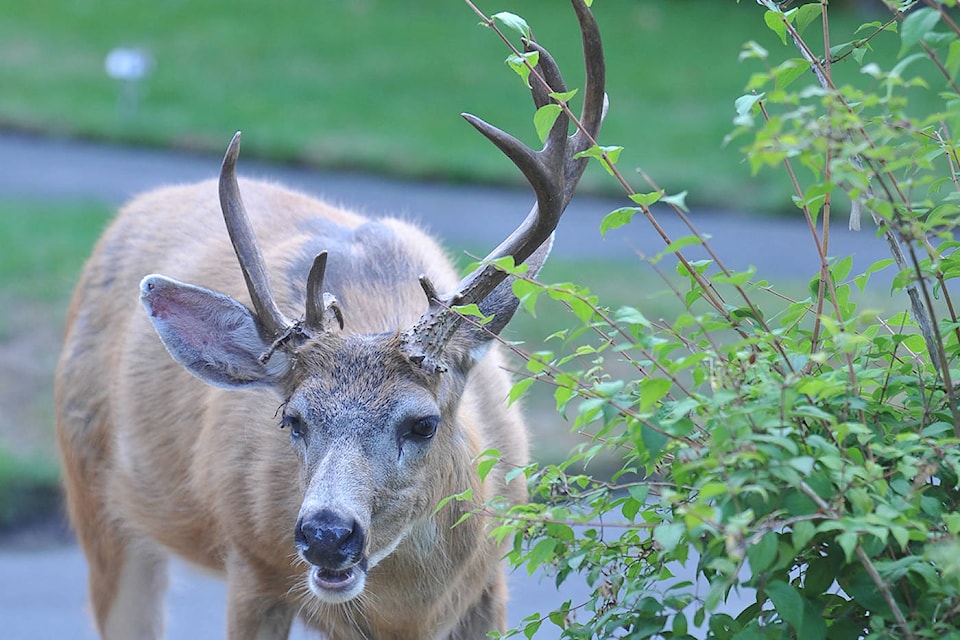Christine van Reeuwyk
Oak Bay News
A nine-week manufacturing delay means capture and collaring of deer will wait to late summer.
The collaring for data collection is part of Phase One of the Urban Wildlife Stewardship Society plan to manage deer in Oak Bay.
The first portion of the project funded by the province and Oak Bay is primarily documentation using both collars and motion activated cameras.
While they ordered the equipment before the end of March, a manufacturing delay pushed the start into fawning season, said project manager Steve Huxter. That means waiting to late summer or early fall to start that portion of the project.
The cameras however, “we can start that process right away,” said Huxter, adding he met with district staff to learn of good sites and with Oak Bay Police Department.
“The net launcher we are using may sound to residents like a gunshot,” Huxter said. That means a plan to contact police agencies in Oak Bay, or adjacent Saanich and Victoria when warranted, when using that equipment to prepare them for potential gunfire calls.
They’ve also submitted to the Ministry of Forests, Lands and Natural Resource Operations for an animal care form for handling wildlife “required whether it’s a banana slug or a grizzly bear.”
During a meeting with provincial wildlife professionals, he learned of a project in Nanaimo where deer with fitted with transmitting collars and discovered bucks move very little and does were tracked at 300 metres or less.
That alters the UWSS plan for camera coverage which included a grid to cover entire 10 square km of Oak Bay, and the number also suggests immigration isn’t a huge factor.
“This could mean the rise in number of deer is primarily due to deer that are habituated to Oak Bay rather than does moving in from other areas,” he said. “We could be at our carrying capacity now and our research will be telling us that.”
Innoculation, not slated for this year, could work better than a cull in that situation, as culling could cause “reproductive rebound.” If the population could be stabilized with the initial planned 80 per cent of deer, “the following years would be less intensive and less costly,” Huxter said, adding vaccination may only need to be done every second or third year.
Motion sensitive cameras are set to go in this week, prompting the question of personal privacy.
Huxter said the motion activated cameras could take pictures of pets or people and they’re already going through thousands of images. So for privacy and their own workload, they’ve set out to each location and chose an area that looks where the deer might be, not people or pets.
“There will be some parks where we just won’t be able to set up a camera.”
What do you think? Email editor@oakbaynews.com.



